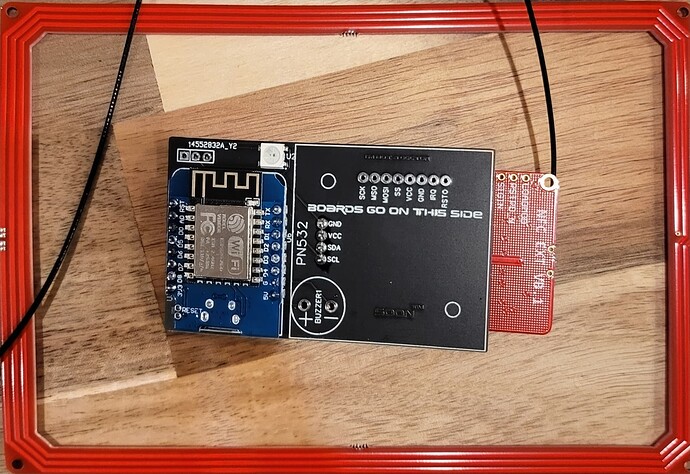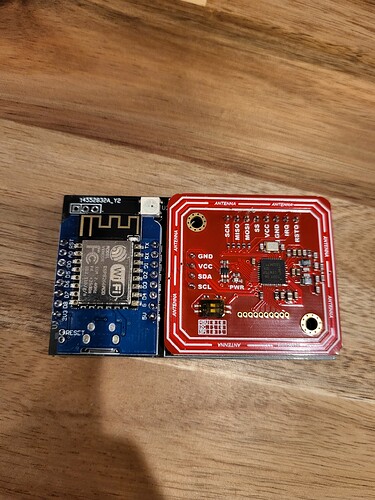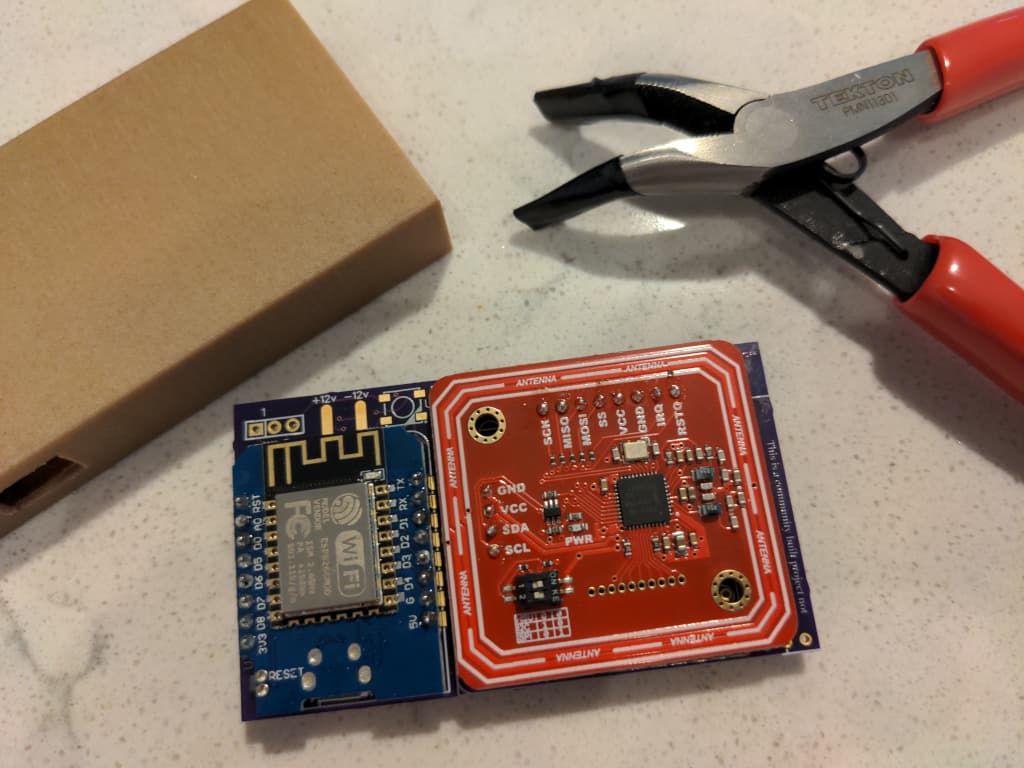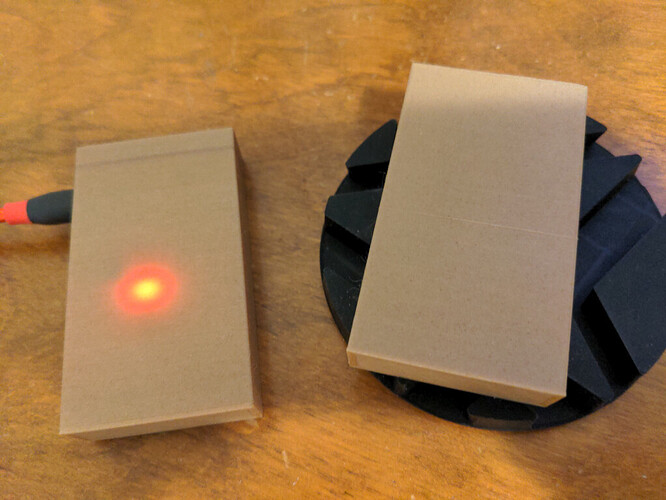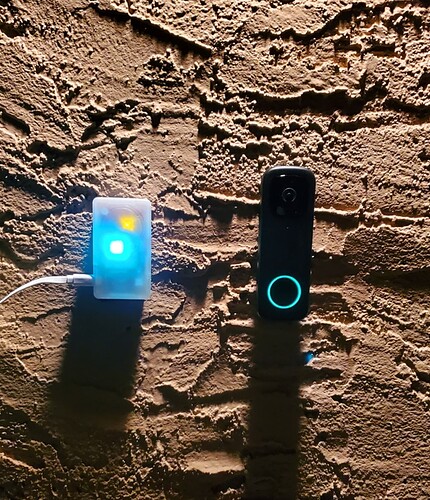Super easy!
Just a heads up the V4 boards from ElectroHouse a significantly better than any other version (in my experience).
My V4 vs any of the countless knockoffs i have has double if not triple the range and is much better at coupling with x series
@W-rabbit - what lock are you using on your bedroom door. Is the reader custom?
The door lock is the METechs MID300 but I had to remove the front plastic piece to get it to read my NExT’s. The readers are built specifically for Home Assistant
New readers are in! Going to test with these then make the board match all of them. Then I’ll start making versions with different controllers.
Super excited!!
I finally received the version 4 reader in the mail and slapped it together. The STLs at DTcommunityWIFIreader/Printables at main · benbeezy/DTcommunityWIFIreader · GitHub were too small for my board. I ended up drawing a new case to fit it. You can find the STL here if it helps any:
I’m really digging this! Good job.
@Ben_bionic What LED are you using for U2 on your board?
WS2812B
100 is a lot so I pulled mine off of another project I had around. Also ordering from Amazon would probably be cheaper.
You can also use the 3 pin headers in the corner to control a full light strip if you want to avoid soldering tiny things. I used a heat gun on the bottom of the board to reflow the LED because the pads behind on the bottom make it hard to solder.
I finally got to scratch the itch to try this and installed Home Assistant on a Raspberry PI and I can see that the PN532 V3 is not impressive but it does the job.
Now what? Hopefully I’m not the only cyborg living in a dumb old house. This seems pretty useful for an alarm or in combination with a smart lock and a UPS or two. Murphy’s law states that you’ll end up in the rain during a power outage otherwise.
But I should probably look into more ideas on what to do with HA.
I got my first implant when I had an apartment complex that has everything key fobbed and loved it! Spent the last year in a dumb apartment complex lol
Looking for a new apartment now and my main concern is having a smart lock XD
I’ve been wanting to set up some home assistant stuff and scratch that itch too. Been following to see what others do to build a to do list.
I feel that most(if not all) electronic entry/exit systems should always have a way to allow passage when power fails(like getting a lock with a physical key in addition to the electronic system)
I was thinking about that today and thought about how many times I have drilled out a lock at work because someone lost a key.
I was thinking of a a key cylinder backup that had pins too long for the sheer line of the core in order to be picked, but you could drill out the core in order to reach the turning mechanism for the latch. If you drilled out the core, then you could unlock the door, and barring any over drilled spots, you could replace the coren.
That would rely upon design of the lock to accommodate a standard core, but would eliminate any picking attempt, though you would need to have access to a drill.
I’ll see if I can’t take a picture of a lock tomorrow, but we have “cabinet” locks where you insert the key and twist, then the cabinet is unlocked, and you can take the core out at the same time. It’s a good design for our work so we can just insert a new core if we want to change the keys for the cabinets within the market, or if one is so old that that no one has the key, we can drill it out and replace the core without replacing the locking mechanism.
Alternatively you could hook up a means of powering the lock by an external battery if power is lost.
I have a reader on my garage door. The brains are powered via a power point, which goes to a battery which is capable of running for a bit over 24 hours and keeping the system operational in the event of a black out. The battery then connects to the board. I have an additional and different battery backup for the roller door lifter motor.
The reader is hardwired and there is no wireless transmission.
My internal garage door which gives access to the house simply has a connector to power the lock by attaching temporarily a 9v battery whilst keying in the code. This completely avoids a key way and therefore prevents picking.
Finally, in the event of more than 24 hours without power (which hasn’t happened yet), I have the ability to connect a generator to my external electricity box and power certain circuits in the home (basically garage roller door, and fridges).
I like that better than drilling a core!
I’ve 3D printed covers for DeWalt batteries with external wires to power equipment. Would be simple to 3D print a very small cover for a watch battery with contacts as a finally backup to power the system from the outside.
Fortunately with the NFC reader and Home Assistant I have each implant do something different at each reader. My NExT in my right hand plays music on reader5 but reader6 outside will toggle the gate lock. Reader6 which is outside the front gate is used to open/close the garage and unlock/lock the front gate. The gate lock is battery powered, has a keypad, is connected to Home Assistant and can be locked/unlocked with various methods. My house is kinda old so it has be a bit of a struggle to make it “smart” but definitely doable and totally worth it
(reader6 next to my Amcrest doorbell)
EDIT: I have upgraded the NFC module to the v4 and it is awesome! This photo has the knock-off v3. You can easily tell because the little light is yellow not red
The newer board designs are compatible with just about all the readers elechouse provides, so you can use different readers because yeah the v3 is meh, but cheap and easy to get.
TBF, I’m somewhat tempted to design a complete board from scratch for the ESP module, NFC chip, antenna, and everything else. Or perhaps a two board design for the smaller cases from Hammond Manufacturing.
But I don’t think that it’s worth the effort? I don’t think that most people here are willing to deal with SMD parts.

